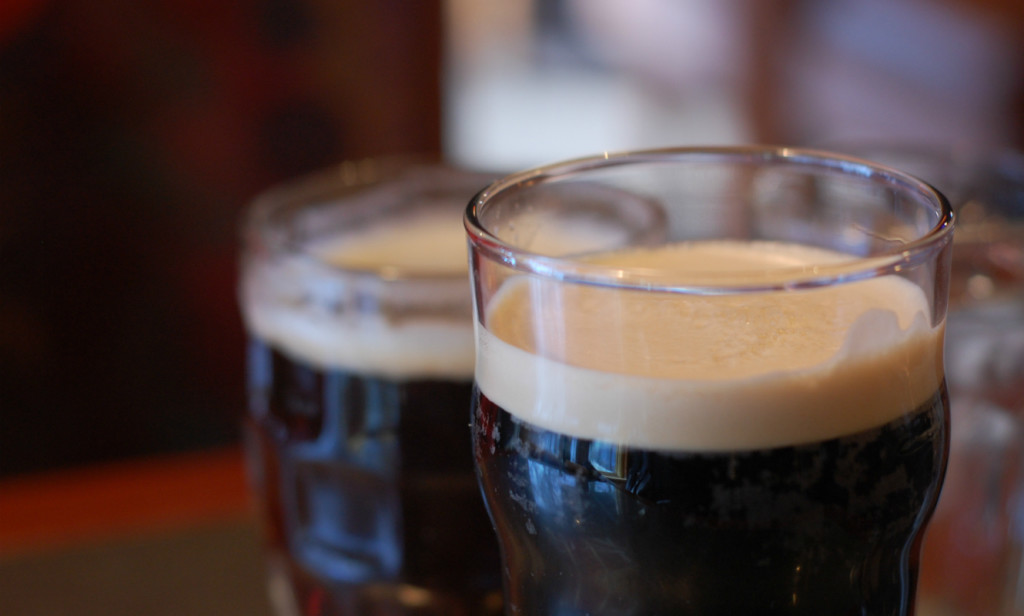Exploring Historic Beer Styles: The Porter

When the weather gets a bit cooler, and the leaves start to change color, my beer tends to do the same. I move away from the lagers, wits, and wheats of summer, to the browns, porters, and stouts of fall and winter. However, my favorite style by far are the “roasty” and “chocolatey” porters which, when brewed well, have the ability to warm any dreary fall day.
The origin of the porter, like another notable British beer style (the IPA), is murky and often riddled with inaccuracies. The most repeated and popular theory is known as “The Three Threads” story. Supposedly, in 1722 London, brewer Ralph Harwood brewed a beer known as “entire,” which, before Harwood combined it into one blend, required bartenders to blend three different beers at the point of service. This story, according to Martyn Cornell, a noted British beer historian, is what our cousins across the pond would call “rubbish.” What Cornell actually found when exploring the historic record is that porters weren’t an entirely new style, but were an outgrowth of so-called “brown” beer.
Around the time of the porter’s alleged creation there were a few options for drinkers at their local pub: usually a mild, a stale, an ale, and a stout. While in today’s beer culture these words have distinct meanings, at the time mild and stale beer (which did not actually mean stale, but aged) were brown beers. Beer classified as “mild” was meant to be drunk fresh, whereas “stale” beer was simply an aged mild. Ale typically meant a beer with less hops, and the stout was anything that was strong, regardless of color.
Competition, as with most great inventions, drove brewers who were brewing British browns to add more hops and store their beer for longer. This new “style” found its home with the British working class, specifically porters, and thus the name stuck. As beer historian Michael Jackson explains, porter’s ascension came around the time of the Industrial Revolution. Thus, with access to expanded shipping, porters were sent around the world. The beer’s dark color and rich flavors were able to hide many flaws, which was especially useful when a beer was brewed for export.
Currently the debate centers less on the porter’s origin, but more with how it actually differs from a brown ale or stout. In a nutshell (especially given its origin), it doesn’t. Some claim porters are a bit creamier than their cousins, or have a different aroma, but ultimately how the beer is labeled is up to the brewer.
So if you haven’t had a porter, where do you start? I have a few personal favorites to set you on your way to enjoying my favorite fall beverage:
Founders Porter: This is my personal gold standard porter. This beer has a bit more “roastiness” on my palate, but is balanced beautifully with a “chocolatey” sweetness that leans more towards cocoa powder than candy bar. The hopping here is clear and assertive, but mostly serves to balance out the sweetness of the malt.
DC Brau Penn Quarter Porter: A local DC favorite, the Penn Quarter Porter, or PQP for short, was originally a limited run by the brewery. Eventually PQP found its way into their regular lineup of cans. This porter is on the sweeter side, but like any good porter has that roasty backbone to balance it out. Given its packaging in cans, this beer is great to take on a hike or any fall outdoor adventure.
Great Lakes Edmund Fitzgerald: This porter, named after the famous ship that sank during a rough storm on Lake Michigan, is another award-winning example of the style. Similar to other porters it has a roasty backbone with some coffee and chocolate skirt around the edges. Similar to Founders Porter, this is a go-to for me.
Deschutes Black Butte Porter: Black Butte Porter comes from one of the standard-bearers in craft beer, and was likely the first porter many West Coast residents (at least those who hadn’t been to England) ever had. As Black Butte only recently made its way to the East Coast, those who haven’t tried it should put it on their list.
Samuel Smith Taddy Porter: While the former are the porters I enjoy the most, I’d be remiss if I didn’t add at least one porter from England. Samuel Smith, which is widely available in the United States, is one of my favorite examples. Brewed in Samuel Smith’s distinctive way, using proprietary well water and fermenting Yorkshire squares (a brewing system that uses the fermentation of the wort to recirculate yeast), this porter is one of the quintessential examples of the style. Slightly acidic with fruit flavors, this beer highlights the differences between English porter and its roasty American counterparts.
So as the weather begins to get colder in your neck of the woods, consider reaching for a delicious and warming porter. And as you drink it, hopefully in the confines of a warm space after a hard day’s work, think of the porters who similarly reached for a pint of the beer named for them and enjoyed the same experience.
Salvatore Colleluori is a political writer by day and a homebrewer and beer enthusiast by night. He holds a degree in Political Science from the George Washington University and enjoys reading about alcohol, history, and foreign relations. He is also an avid music lover, specifically jazz and the Grateful Dead.
Photo credit: Jim Kelly

